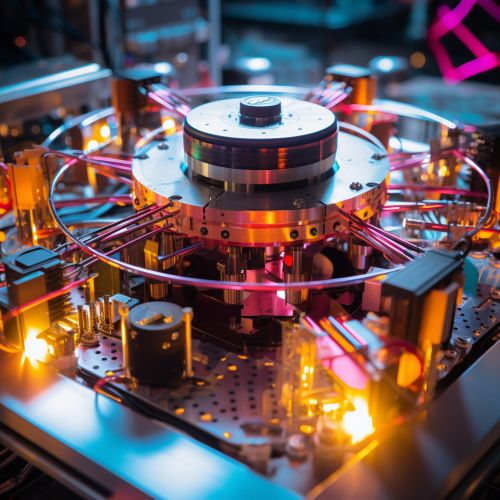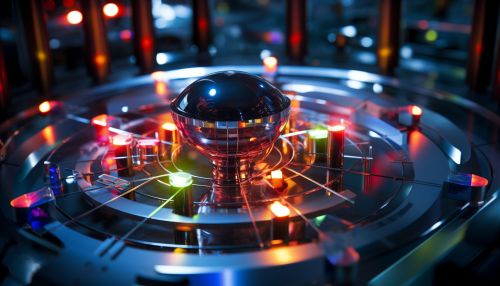Quantum Computing with Cold Atoms
Introduction
Quantum computing is a rapidly evolving field that leverages the principles of quantum mechanics to process information. One of the promising approaches to building quantum computers involves the use of cold atoms. In this context, 'cold' refers to temperatures close to absolute zero, where atoms are nearly motionless. This article delves into the intricate world of quantum computing with cold atoms, exploring the underlying principles, techniques, and potential applications.


Quantum Computing Basics
Quantum computing differs fundamentally from classical computing. While classical computers use bits as their smallest unit of data, quantum computers use quantum bits, or qubits. Unlike bits, which can be either a 0 or a 1, qubits can be in a superposition of states, meaning they can be both 0 and 1 simultaneously. This property, along with entanglement and quantum interference, allows quantum computers to perform complex calculations much more efficiently than classical computers.
Cold Atoms in Quantum Computing
Cold atoms have emerged as a promising platform for quantum computing due to their unique properties. When atoms are cooled to near absolute zero temperatures, they exhibit quantum mechanical behaviors that can be harnessed for quantum computing. These behaviors include superposition and entanglement, which are the cornerstone of quantum information processing.
Laser Cooling and Trapping
The process of cooling and trapping atoms is a crucial step in the creation of a cold atom quantum computer. Laser cooling, a technique that uses the radiation pressure of light to cool gases, is commonly used. This technique involves the use of lasers and magnetic fields to slow down and trap atoms in a region of space. Once trapped, the atoms can be manipulated with precision, allowing for the implementation of quantum gates and the execution of quantum algorithms.
Quantum Gates and Algorithms
In quantum computing, operations on qubits are performed using quantum gates. These are the quantum equivalent of classical logic gates. They operate on the principle of unitary evolution, transforming the state of qubits in a way that preserves their total probability. Various quantum algorithms, such as Shor's algorithm and Grover's algorithm, can be implemented using a sequence of these gates.
Advantages and Challenges
Cold atom quantum computing offers several advantages over other quantum computing platforms. For instance, cold atoms are highly isolated from their environment, which minimizes decoherence – a major challenge in quantum computing. Additionally, cold atoms can be precisely controlled with lasers, allowing for high-fidelity operations.
However, there are also significant challenges to overcome. Cooling and trapping atoms require sophisticated equipment and precise control. Furthermore, scaling up cold atom quantum computers – increasing the number of qubits – is a complex task that researchers are still working to address.
Applications and Future Directions
The potential applications of quantum computing are vast, ranging from cryptography and optimization to quantum simulation and machine learning. Cold atom quantum computers, with their high precision and low decoherence rates, could be particularly suited for these tasks.
As research progresses, we can expect to see advancements in the scalability and control of cold atom quantum systems. These developments will bring us closer to the realization of practical quantum computers that can outperform classical computers in a wide range of tasks.
